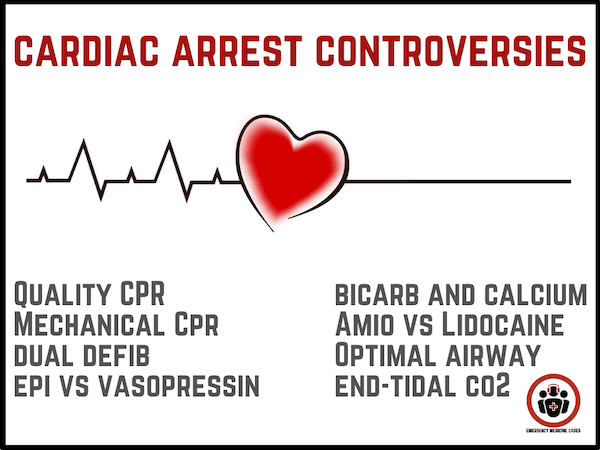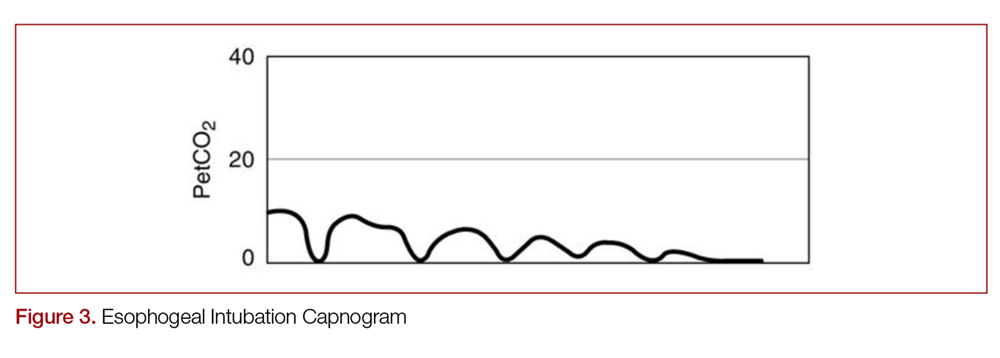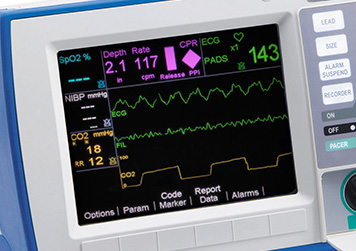low end tidal co2 during cpr
The first sign of the return of spontaneous circulation ROSC during CPR is increase in ETCO2 therefore monitoring of ETCO2 provides very useful information to. Possibly the chest compressions are not being performed fast enough or.

Average Etco2 Kpa During Cpr In Patients With Or Without Rosc Download Scientific Diagram
Two very practical uses of waveform capnography in CPR are.

. 25 26 27 Flow. Measurement of a low ETCO 2 value 10 mmHg during CPR in an intubated patient suggests that the quality of chest compressions needs improvement. End-tidal carbon dioxide.
End-tidal carbon dioxide CO 2 monitoring is a safe and effective noninvasive indicator of cardiac output CO during CPR. Normal ETCO2 in the adult patient should be 35-45 mmHg. 1 evaluating the effectiveness of chest compressions and 2.
The first sign of the return of spontaneous circulation ROSC during CPR is increase in ETCO2 therefore monitoring of ETCO2 provides very useful information to. Value is normally less then 5 mmHg. End-tidal carbon dioxide ETCO 2 as measured by waveform capnography is considered a physiologic measure of cardiac output in low-flow states and has been proposed.
Cardiac output and end-tidal carbon dioxide. CPR is a low cardiac output state during which E tco 2 becomes less dependent on CO 2 production and ventilation and more linearly related to cardiac output. What happens if an end-tidal CO2 monitor is showing a reading lower than 10mmHg during chest compressions.
A low end-tidal CO2 may indicate poor perfusion hypovolemia or sepsis. Abrupt increase in ETCO2 suggests ROSC during CPR detectable before pulse check ETCO2 at 20 minutes of CPR is prognostically useful. Loss of ETCO2 may be the first sign that CPR is needed.
End-tidal carbon dioxide. Here are five things you should know about waveform capnography in cardiac arrest. Throughout the resuscitation end-tidal CO 2 was.
During cardiac arrest CO 2 continues to be generated throughout.

End Tidal Co2 In Cardiopulmonary Resuscitation Etco2 In Cpr

How To Read And Interpret End Tidal Capnography Waveforms Jems Ems Emergency Medical Services Training Paramedic Emt News

Cardiac Arrest Cpr Defibrillation Medications Airway Em Cases

Monitoring Exhaled Carbon Dioxide Respiratory Care

Capnography As A Clinical Tool

End Tidal Capnography In The Emergency Department Mdedge Emergency Medicine

Capnography As A Clinical Tool

Uses Of Capnography In The Critical Care Unit Semantic Scholar

Two Site Regional Oxygen Saturation And Capnography Monitoring During Resuscitation After Cardiac Arrest In A Swine Pediatric Ventricular Fibrillatory Arrest Model Springerlink

Basic Capnography Interpretation Nuem Blog

Waveform Capnography In The Intubated Patient Emcrit Project

Monitoring Exhaled Carbon Dioxide Respiratory Care

Capnography For Cpr Nonin Pdf Catalogs Technical Documentation

Learn More With This Respiratory Article By Melissa Marshall

End Tidal Co2 Etco2 Capnography For R Series Zoll Medical

Reversible Causes Of Low Etco2 In Cpr Criticalcarenow

Average Etco2 Kpa During Cpr In Patients With Or Without Rosc Download Scientific Diagram

Etco2 Valuable Vital Sign To Assess Perfusion The Airway Jedi
